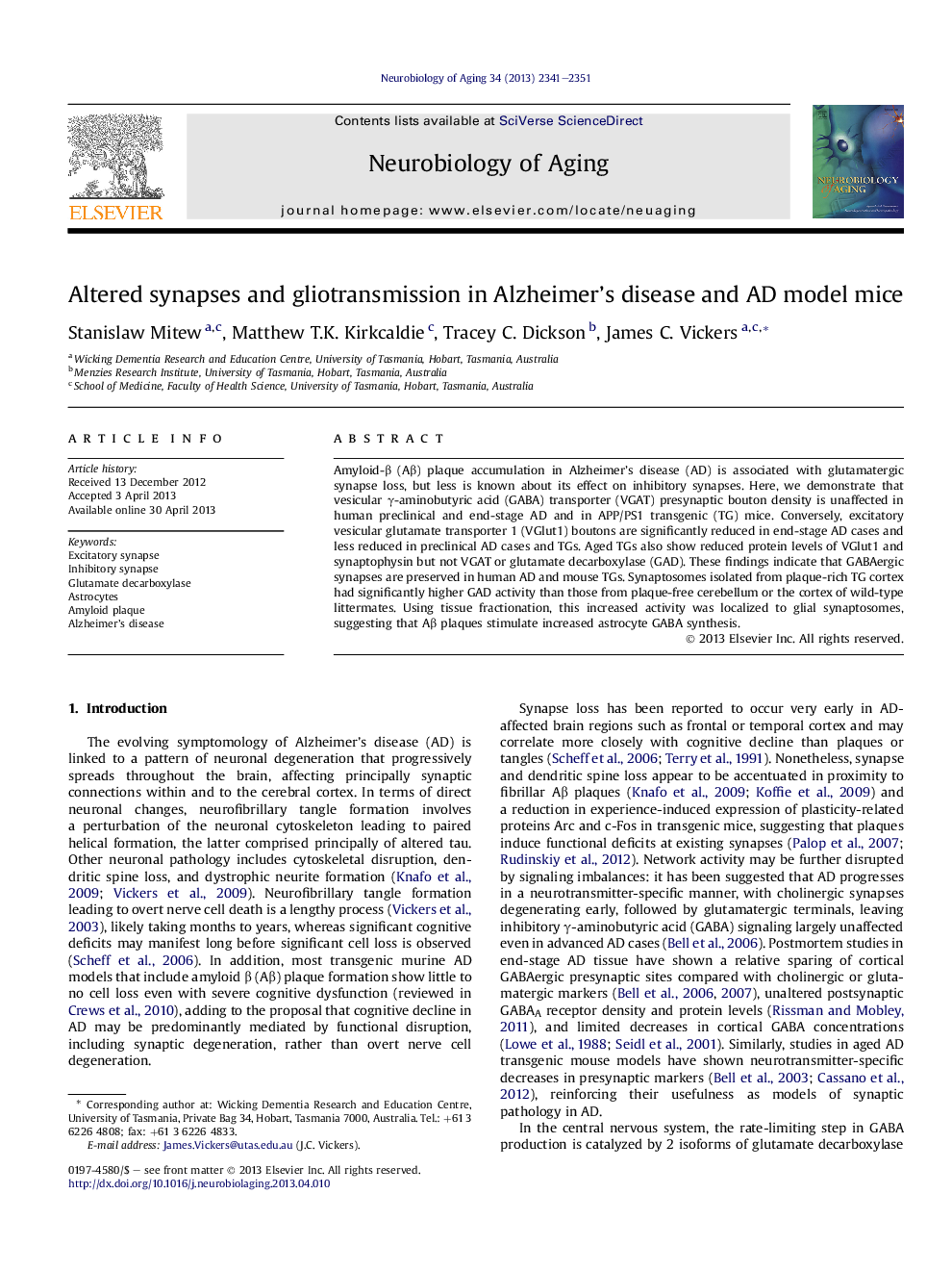| Article ID | Journal | Published Year | Pages | File Type |
|---|---|---|---|---|
| 6806950 | Neurobiology of Aging | 2013 | 11 Pages |
Abstract
Amyloid-β (Aβ) plaque accumulation in Alzheimer's disease (AD) is associated with glutamatergic synapse loss, but less is known about its effect on inhibitory synapses. Here, we demonstrate that vesicular γ-aminobutyric acid (GABA) transporter (VGAT) presynaptic bouton density is unaffected in human preclinical and end-stage AD and in APP/PS1 transgenic (TG) mice. Conversely, excitatory vesicular glutamate transporter 1 (VGlut1) boutons are significantly reduced in end-stage AD cases and less reduced in preclinical AD cases and TGs. Aged TGs also show reduced protein levels of VGlut1 and synaptophysin but not VGAT or glutamate decarboxylase (GAD). These findings indicate that GABAergic synapses are preserved in human AD and mouse TGs. Synaptosomes isolated from plaque-rich TG cortex had significantly higher GAD activity than those from plaque-free cerebellum or the cortex of wild-type littermates. Using tissue fractionation, this increased activity was localized to glial synaptosomes, suggesting that Aβ plaques stimulate increased astrocyte GABA synthesis.
Keywords
Related Topics
Life Sciences
Biochemistry, Genetics and Molecular Biology
Ageing
Authors
Stanislaw Mitew, Matthew T.K. Kirkcaldie, Tracey C. Dickson, James C. Vickers,
